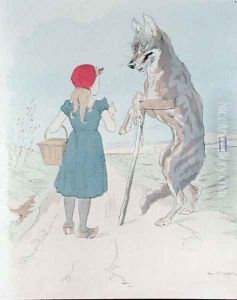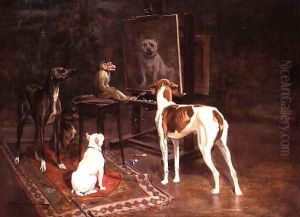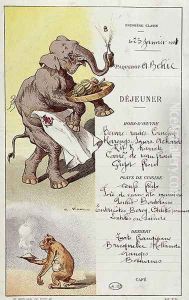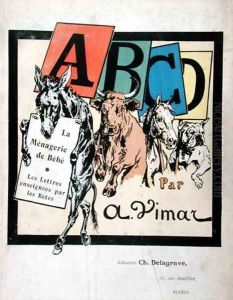A. Vimar Paintings
Auguste Vimar was a French artist known for his illustrations and sculptures. Born in 1851 in Marseille, France, Vimar grew up in an era marked by significant cultural and artistic developments. Although not as widely recognized as some of his contemporaries, Vimar's work still reflects the rich artistic milieu of late 19th-century France.
Vimar exhibited a profound interest in animals, which became a central theme in his art. He is particularly noted for his humorous and lively depictions of animals, both in his illustrations and his sculptures. Vimar's style was characterized by a playful and often anthropomorphic portrayal of animal subjects, which reflected the influence of the burgeoning popularity of animalier sculpture during his time.
Throughout his career, Vimar contributed illustrations to various periodicals and published works. His illustrations were featured in magazines such as 'Le Rire' and 'Figaro Illustré', which were prominent during the Belle Époque period. He also illustrated several books, including 'Les Chats' (The Cats) by Champfleury and 'Drole de Menagerie' (Funny Menagerie). These works demonstrate his skill as an illustrator and his ability to capture the whimsical nature of animals in a way that resonated with both children and adults.
In addition to his work as an illustrator, Auguste Vimar was an accomplished sculptor. He created a number of bronzes, again mostly focusing on animal subjects. His sculptures, much like his illustrations, were appreciated for their vitality and charm.
Vimar's work was exhibited at the Salon des Artistes Français, where he received an honorable mention in 1891. He continued to participate in artistic circles and exhibit his work until his death in 1916. Although Auguste Vimar may not be a household name today, his contributions to animalier art remain a delightful and charming record of the period's aesthetic tendencies.



